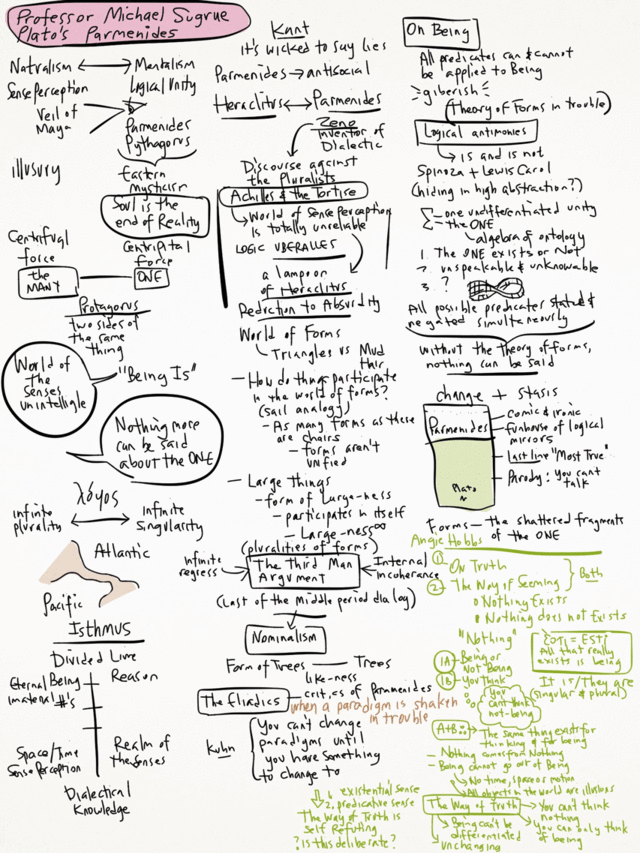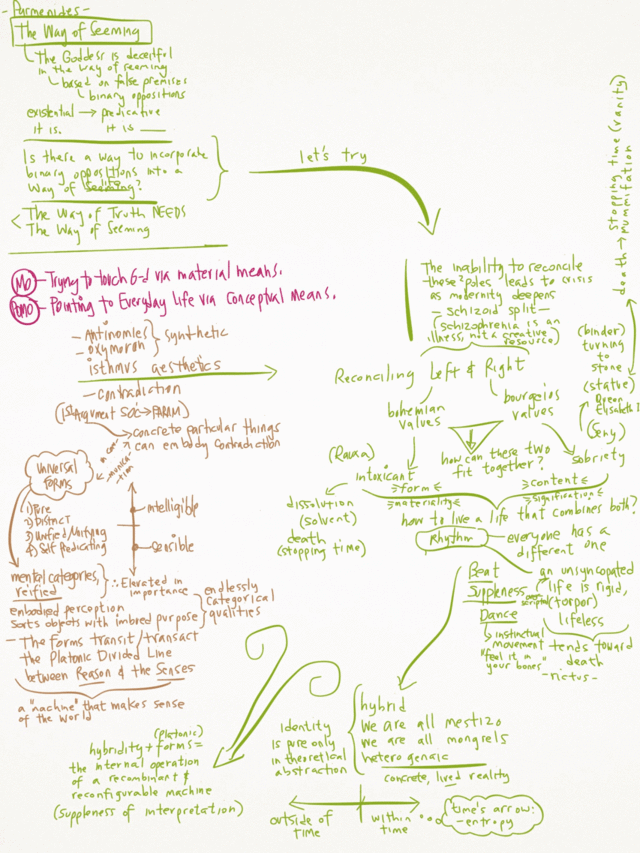January 28, 2018
Isthmus Aesthetics?
The word torpor best describes the current state of the art world. Lassitude, sluggishness, inertia*. We have been lingering at this impasse for far too long. How long? I figure that the beginning of the 90's was the end of the chain of theoretical permutations of postmodern art theory that had the power to animate the art world and beyond. What had preceded that -beginning of the end- moment was about thirty years of a worldview that denied capital "T" truth, objective reality and the originality in authorship. During that time frame and for a sputtering afterwards, the anti-modern paradigm yielded dazzling treasures but at an ever diminishing rate. This, long after modernism itself gave up the ghost. We are caught between the twin pillars of the twentieth century, modernism and postmodernism, unable to chart - much less see- the presenting ordinates that characterize the twenty first century, a world that we are nearly twenty years deep into.
Plato. Socrates. I've lost count of the number of times that I've listened to this Youtube video of a lecture by Professor Michael Sugrue on Plato's Parmenides. I've lived past sixty years to finally encounter this characterization of the Forms. Prior to listening to Sugrue's presentation, I took for granted Raphael's conventional depiction of Plato and Aristotle: the former as idealist and the latter as one of the world. What is revelatory for me is to understand the efforts of Socrates and Plato as an attempt to bridge Parmenides' mentalism and Heraclitus' naturalism. The second order revelation is that these distinctions live on to this day albeit in other guises, detailed in part above. What drives the interpolation of these ordinates is that each arrives inexorably to an extinguishing silence.
A dialectic and the invocation of the supra-mental categorical Forms provides the mechanics of interpolation. Sugrue's invocation of the isthmus is a brilliant characterization and extremely suitable for use as a label for what usually defies description. And what I find admirable about Plato after listening to Sugrue is his humility of the great philosopher in incorporating a powerful critique and refutation of his own cherished ideas within the body of his collective writing. Indeed, Plato is portrayed as someone who is strong enough to mock himself in comic and ironic tones. What a marvel! Plato is in effect saying, that while rigor will defeat his propositions, this is all we have until someone devises something better. Sugrue summed this up at the end of the video:"...If you want to maintain some kind of isthmus and intelligibility, we must borrow from both the change and the stasis, from both being and becoming, but we can't let either overwhelm us... We've reached the end of language itself and we find that if we want to have communication at all, we have to communicate using the best we have. The best we have is the theory of forms, despite the fact that the theory of forms is in trouble..."Let Emerson bridge between the exhaustion described in the first paragraph above and what follows it with Sugrue's intelligible isthmus:
POLARITY, or action and reaction, we meet in every part of nature; in darkness and light; in heat and cold; in the ebb and flow of waters; in male and female; in the inspiration and expiration of plants and animals; in the equation of quantity and quality in the fluids of the animal body; in the systole and diastole of the heart; in the undulations of fluids, and of sound; in the centrifugal and centripetal gravity; in electricity, galvanism, and chemical affinity. Superinduce magnetism at one end of a needle; the opposite magnetism takes place at the other end. If the south attracts, the north repels. To empty here, you must condense there. An inevitable dualism bisects nature, so that each thing is a half, and suggests another thing to make it whole; as, spirit, matter; man, woman; odd, even; subjective, objective; in, out; upper, under; motion, rest; yea, nay.
The world presents itself in polarity. Trouble begins when we forget, or worse when some of us begrudge the sunset. We need today an Isthmus Aesthetics to heal what is indisputably a growing schizoid split in society at large and within the arts, within the philosophy that animates the art world in particular. This is not to denounce great art that once exploited schizophrenia and pain. For example, Dada could be characterized as an effort to keep people from forgetting the pain of WWI. André Breton's effort to groom Dada into Surrealism met resistance with artists such as Masson and Bataille who rebelled against smoothing out the edge into a genteel psychology.
Art has always had a special license if not a mandate to incorporate what society censures. But that was then and this is now. What society today censures is an awareness of the connectedness between us all. We are spontaneously encouraged to revile "the other", to root ourselves in schism and persecute wrong-think. We have come to the point in our information age where our blindness to this phenomena is ultimately a willful blindness. I am asserting here that once one understands the deepening crisis, to continue to exploit pain in order to capitalize on art's tendency to source its power in feeling is fundamentally immoral.
Sugrue twice invoked Thomas Kuhn's paradigm shift, saying that we can't change paradigms without a subsequent one to change to. While I nominate Isthmus Aesthetics, I suffer no illusion that this is a complete vision. This is merely a direction, an ambit defined between ordinates each of whose fulfillment singularly result in torpor then silence... but co-joined can sustain an inflecting charge.
* The world abounds with examples of the arts enfeebled, this one is nearly a random pick. Check out this link to NerdWriter's video about "passable movies".
Posted by Dennis at January 28, 2018 5:48 PM

Leave a comment